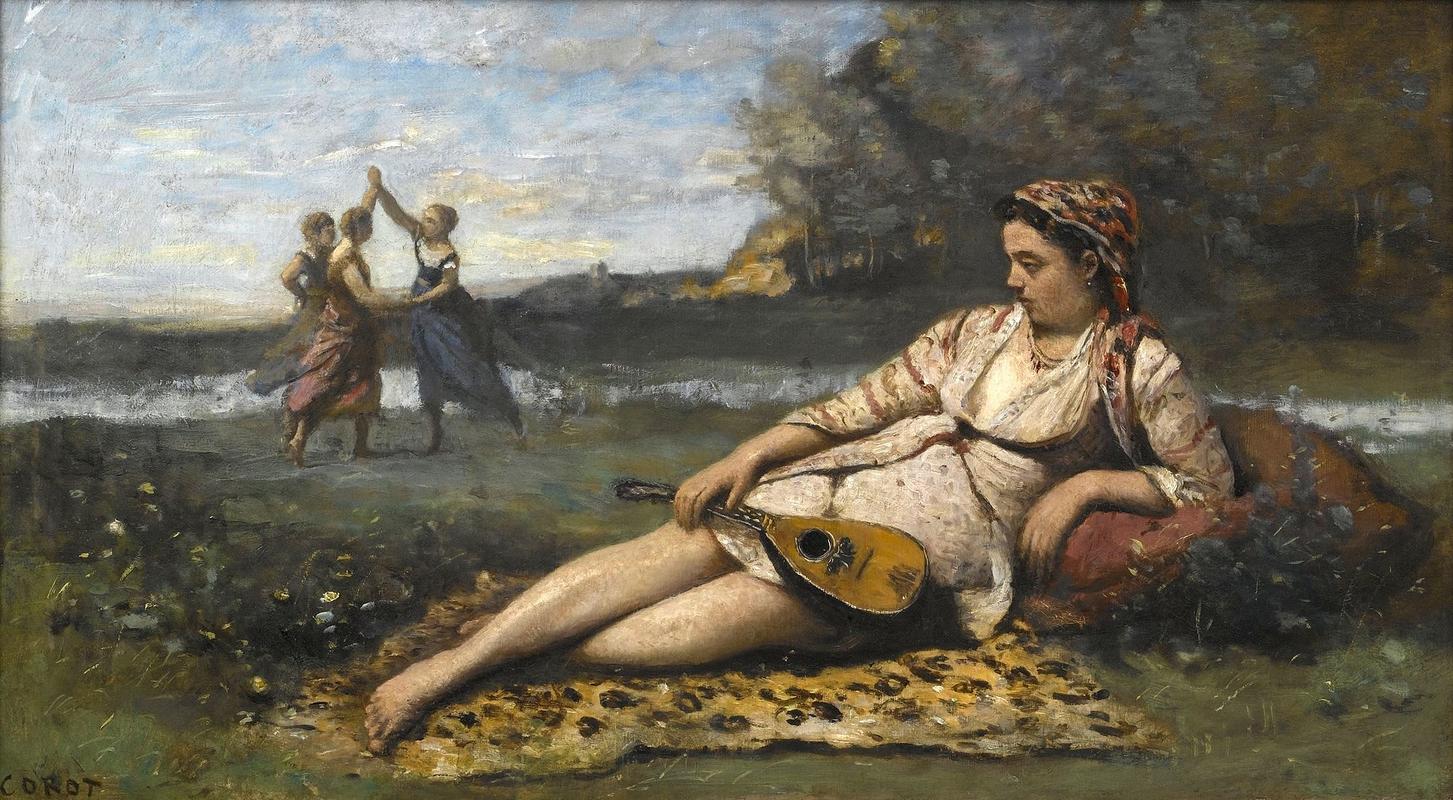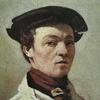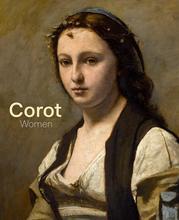More about Young Women of Sparta
- All
- Info
- Shop

Contributor
Corot's Young Women of Sparta, in a different era, was titled Young Girls of Sparta, a more literal translation of the French title.
This might seem strange, but we can credit this work to the authorship of both the painter and his distinctive model, Emma Dobigny, born Marie Emma Thuilleux in 1851 in Montmarc, Oise, France. She is famous for her work with Edgar Degas, Pierre Puvis de Chavannes, and maybe James Tissot, but she was also renowned for her chutzpah. One visitor to Corot's studio complained that instead of sitting there like a store mannequin, she "prattled, sang, laughed," and "didn't stay put." Why the visitor was upset, rather than the artist, is not clear, but Corot responded to the criticism by saying that he loved that very same "changeability" about her, adding, "I am not one of those specialists who makes set pieces. My object is to express life. I need a model who moves around."
In 1889, the painting caught the eye of a real brilliant art hustler called Paul Durand-Ruel, who was one of the first to give stipends to artists, filling the void of care left by kings and queens whose dominance as art world patrons was waning. Durand-Ruel supported Degas, Édouard Manet, Claude Monet, Berthe Morisot, Camille Pissarro, Pierre-Auguste Renoir, and Alfred Sisley, among others. He flipped this painting five days later to the Havemeyers, an art-collecting, suffragist, sugar-tycoon couple, making a cool 400 francs, about $144,000 in today's U.S. dollars. Not too shabby. There are few things more financially valuable than a good curator's eye, which is why you can get things so cheaply at the Salvation Army or a garage sale, if you want to spend the energy to sift through all the tchotchkes.
Speaking of flipping, Corot used this same image of Dobigny in repose, facing the other direction, for the Young Algerian Woman Lying in the Grass, today at the Rijksmuseum. He also used it for the Sicilian Odalisque, whose location is unknown. Dobigny was neither Algerian, Spartan, nor Sicilian, but Corot felt that the market needed symbols of the "Orient" to orient themselves in a precarious Europe.
Sources
- Boggs, Jean Sutherland. Degas. Chicago: Art Institute of Chicago, 1996.
- Frelinghuysen, Alice Cooney, and Gary Tinterow. Splendid Legacy: The Havemeyer Collection. New York: Metropolitan Museum of Art, 1993.
- Gowans, Alan. The Restless Art: A History of Painters and Painting, 1760-1960. Philadelphia: Lippincott, 1966.
- "Historical Value of French Franc (in comparison to U.S. dollar)." AskMetaFilter, Feb 4, 2015, http://ask.metafilter.com/275442/Historical-Value-of-French-Franc-in-co….
- Shaw-Miller, Simon. Visible Deeds of Music: Art and Music from Wagner to Cage. New Haven: Yale University Press, 2002.
- Stamberg, Susan. "Durand-Ruel: The Art Dealer Who Liked Impressionists Before They Were Cool." NPR, Aug. 18, 2015, https://www.npr.org/2015/08/18/427190686/durand-ruel-the-art-dealer-who….
- Tinterow, Gary, Michael Pantazzi, and Vincent Pomarède. Corot. New York: Metropolitan Museum of Art, 1996.
- Webster, Ian. "$5,160 in 1889 → $144,128.90 in 2020." Official Data Foundation, https://www.in2013dollars.com/us/inflation/1889?amount=5160.












